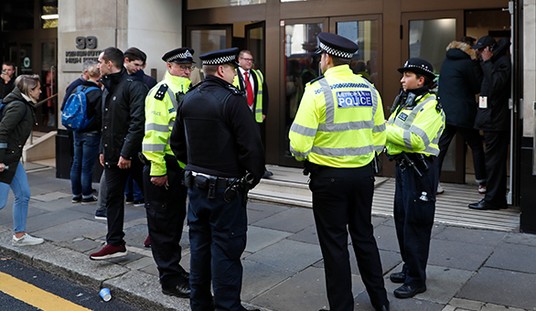Almost all Israelis and Israel’s supporters burst their buttons with pride when they saw the reports of the Israel Defense Forces’ emergency army units in Haiti rescuing trapped victims and treating hundreds of wounded.
“Legendary,” “the Rolls Royce of emergency medical care,” and “amazing” were some of the glowing terms used by U.S. network correspondents. Their reports described the efficiency, enthusiasm, speed, planning, and compassion of the 220-member Israeli team.
Unfortunately, the afterglow will quickly die. This week marks the three-month deadline given by the UN General Assembly for Israel’s response to the Goldstone report on the Gaza war, which charged Israel (and nominally, Hamas) for serious violations of international and humanitarian law. Israel will attempt to defend itself, but it knows that little justice or sympathy will be found in the UN’s kangaroo court or in the media that will sully Israel’s reputation and tarnish the tributes Israel earned in Haiti.
How is it, then, that Israel, so skillful in saving lives, stands accused by the UN of “war crimes, crimes against humanity, willful killings, and willfully causing great suffering”? Israel’s critics acerbically ask how Israelis can fly halfway around the world to help victims but not help Palestinians in Gaza an hour away. Some sick commentators even suggested Israeli doctors were harvesting organs.
Something just doesn’t compute with the images from Haiti.
First, let’s look at the background of the IDF team in Haiti. That was my unit. As an IDF reservist, I served as a medic on the medical rescue team, and we trained hard working with the engineers who lifted slabs of cement while we practiced inserting infusions and assisting doctors performing emergency operations in the dark, dusty conditions. Over the years, the unit was dispatched to natural catastrophes in diverse places such as Turkey, India, and Mexico City, and assisted in rescue efforts after the terrorist bombing of the American Embassy in Nairobi, Kenya, in 1998.
The unit was originally formed after the first Lebanon war when an explosion in November 1983 pancaked a seven-story building in Tyre used by Israeli forces. Seventy-five Israeli soldiers were beneath the rubble, and the IDF was unequipped to rescue them. (Within a year, Hezbollah car bombs in Beirut brought down American and French barracks, killing some 300 soldiers.)
In my unit’s case, we were training for a contingency that we prayed would never come: Scud missiles raining down on Israeli cities. During the Gulf War 19 years ago, my unit was mobilized for the month-long war and bivouacked in an ambulance center. Whenever the sirens wailed, we threw on our chemical warfare gear and ran to the ambulances. Basically, our mission was: “If it’s bleeding, tie a tourniquet; if it’s breathing, stick it with atropine (to treat nerve gas), and then ‘scoop and run’ the victims to the hospital.” Our “front” was the Jerusalem area. No missiles fell in our sector, but 40 did fall, mostly on residential areas of Tel Aviv and Haifa. I will never forget the sense of terror while climbing into my ambulance and watching a Scud pass over my head as it headed toward Israel’s Ben Gurion Airport.
At home my wife responded to the sirens, scurrying the children into the shelter while putting gas masks on the older children and bundling the baby into a special sealed plastic coop. One son, who was in Jerusalem’s Old City at the time of one attack, recalls to this day the whistles and yelps of joy by Palestinians celebrating the fall of Saddam’s missiles on Israel.
Every Israeli over the age of 20 remembers the terror of the missile attacks. The trauma may be old, but it’s deep. The fear, abhorrence, defiance, anger, and shock resurfaced when Hezbollah unleashed its month-long barrage of missiles against northern Israel in the 2006 Lebanon war, and when Hamas fired 8,000 Qassam/Katyusha missiles which finally led to Israel’s 2008 Gaza campaign. Those Lebanese and Gazans who unleashed or gave cover to the savage and indiscriminate attacks against Israeli civilians and then found themselves on the receiving end of Israeli fire will find little relief or sympathy within Israel today.
I recall 20 years ago meeting dozens of Palestinian doctors and nurses from Gaza and the West Bank who were attending an Israeli ulpan for the intensive study of Hebrew. They sought the language to facilitate their on-the-job training in the Israeli hospitals, which accepted them with open arms … until the Palestinians unleashed their intifadas against Israeli civilians.
By nature, Israelis will go the end of the earth — literally — to save lives, and it doesn’t take an earthquake to send Israeli medical teams around the world. Save a Child’s Heart is an Israeli-based group of pediatric heart surgeons who have saved more than 2,000 children with congenital heart defects. The children come from 36 countries, including Iraq, Jordan, Sudan, and the Palestinian Authority. The Israel Forum for International Humanitarian Aid (IsraAID) sent additional medical units to Haiti, besides the vaunted IDF field hospital. The group swung into action after the tsunami in 2004, providing on-the-ground assistance and health care to Sri Lanka. Israeli medical teams teach local African surgeons in Swaziland to perform circumcisions on men to reduce their risk of contracting AIDS, and Israeli eye doctors restore sight to patients in places like Vietnam, Uzbekistan, and Palau.
Frankly, saving lives is a mitzva (commandment) Israelis do as part of their national and religious ethos. But when threatened, such as in the latest rounds of fighting with Iran’s proxies in Gaza and Lebanon, Israelis can respond sternly. Soldiers and their commanders on the way to the front passed through towns and cities which were under fire. Israeli families were fleeing or in shelters. Because of Israel’s collective traumas and the indiscriminate attacks on Israel’s weakest, the IDF will do just what its name suggests — it defends with force, force that is incredibly accurate and lethal. The targets may be terrorist headquarters in a refugee camp, a camouflaged nuclear facility in Syria, or a master terrorist driving in his car.
Yet even in war, those Israeli soldiers uphold a code of saving lives. They abort missions if enemy civilians may be harmed, they hesitate and weigh their actions when enemy combatants are ensconced in civilian schools and hospitals, and they investigate and judge when tragic mistakes are made. This is an army that drops leaflets and calls Gaza residents on their phones, warning them of an imminent attack on Hamas terrorists hiding in their midst. During the Gaza war, the IDF set up its medical unit at the edge of the battlefront to treat Gazan residents; Hamas forbade any resident to make use of the hospital services.
The search and rescue unit was created to respond to attacks upon Israel’s homefront. They train for World Trade Center-type attacks on Israeli cities, or for a major earthquake, or an Iranian nuclear device that could deliver devastation on the scale of Haiti’s earthquake to hundreds of thousands of Israelis.
War may be the cruelest of man’s creations, but the IDF has harnessed its medical rescue unit for peace. If only it could be mobilized permanently for that purpose.









Join the conversation as a VIP Member